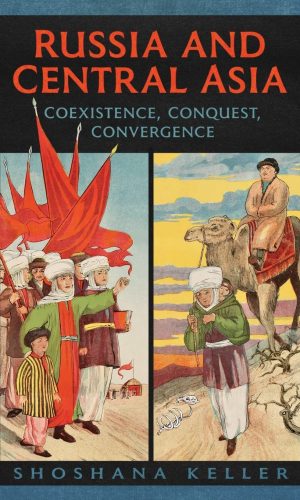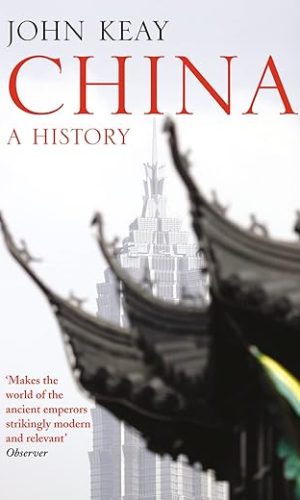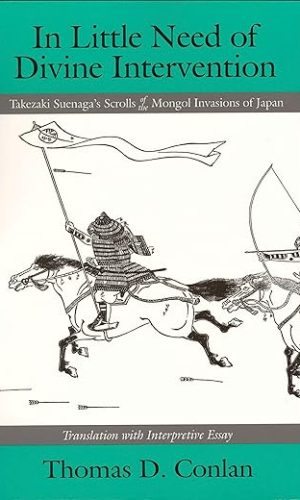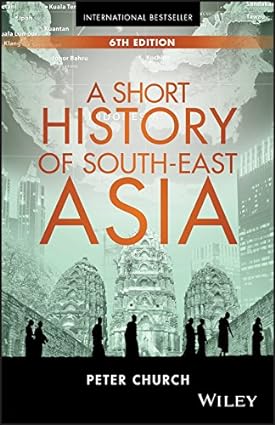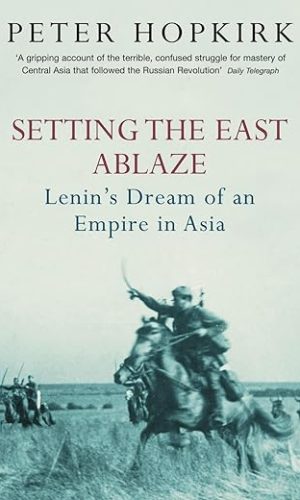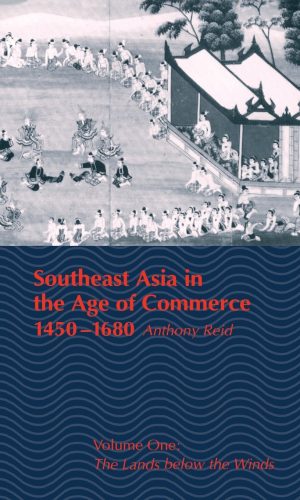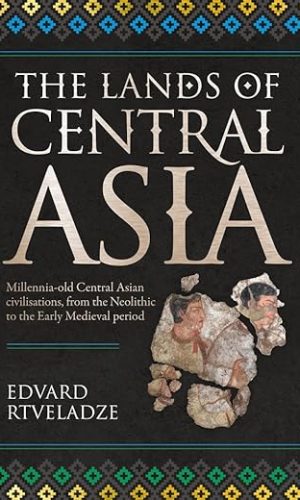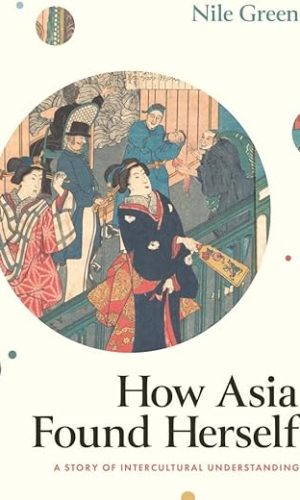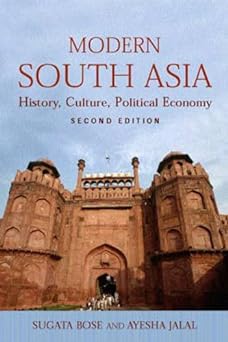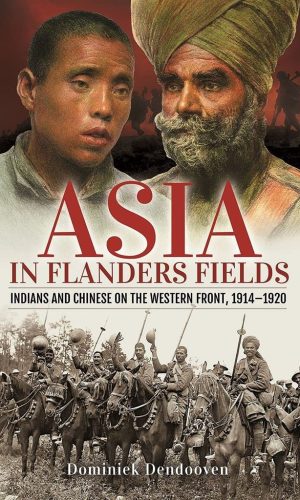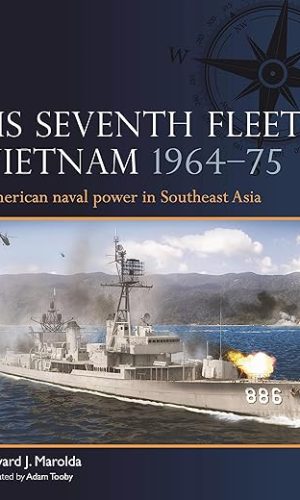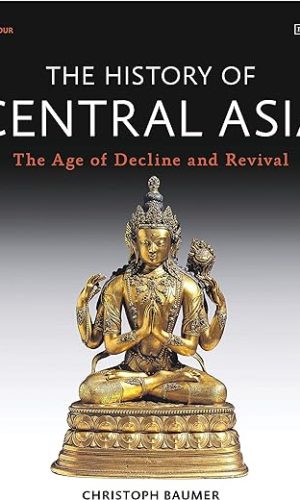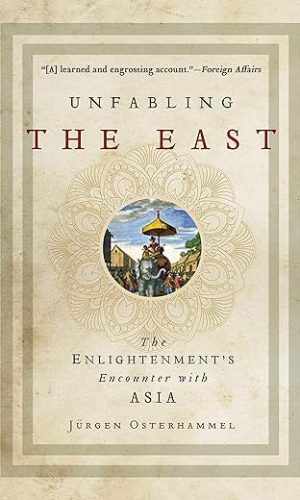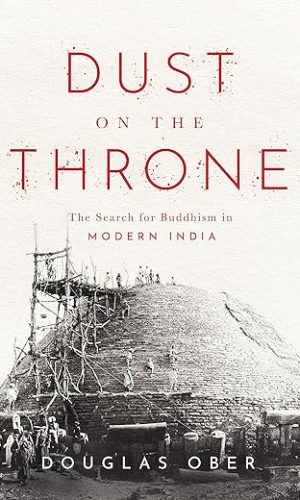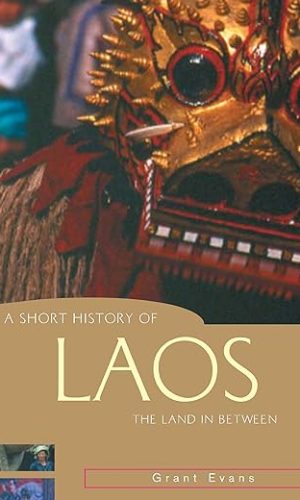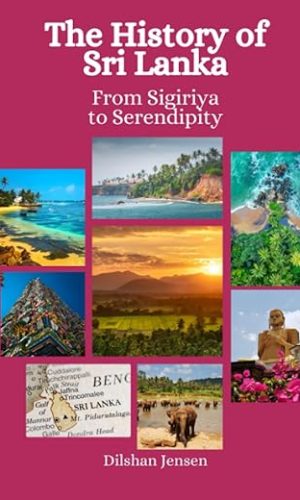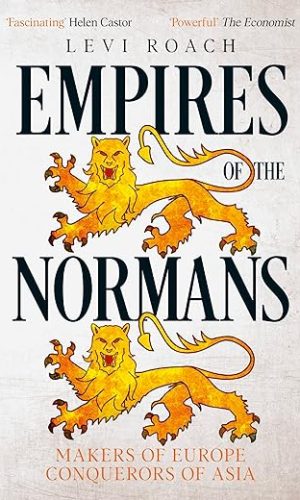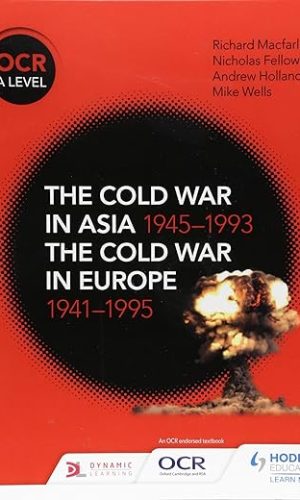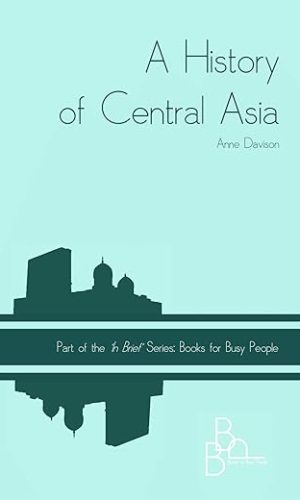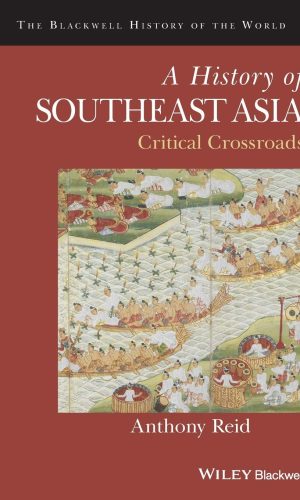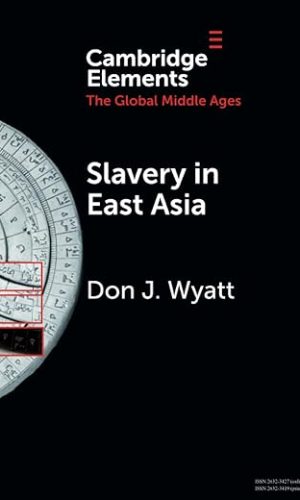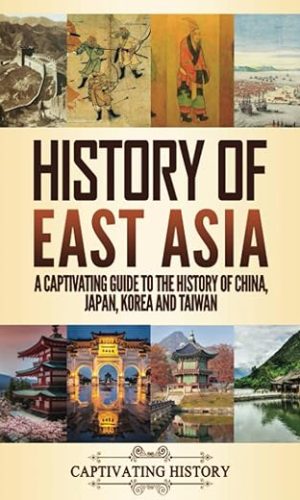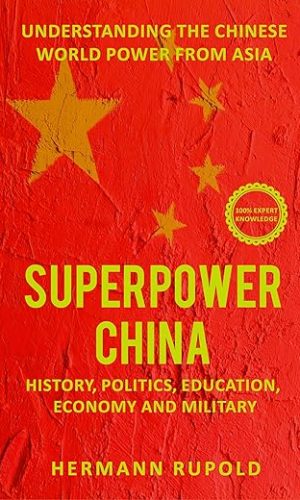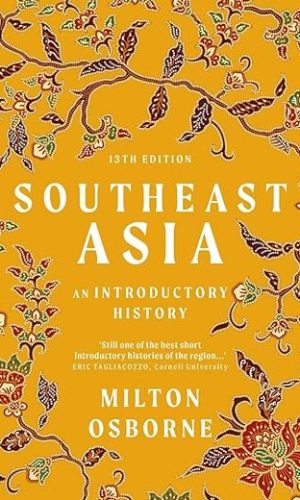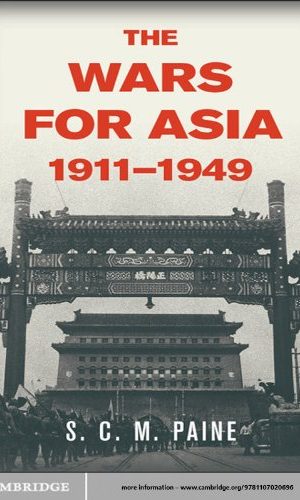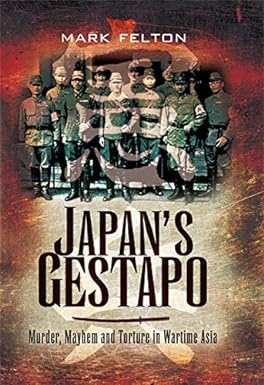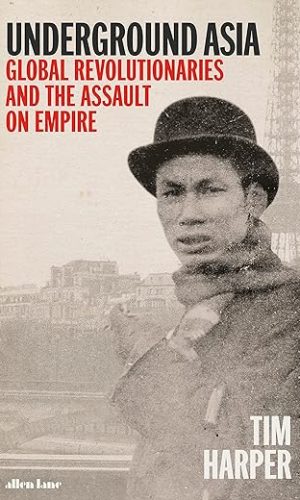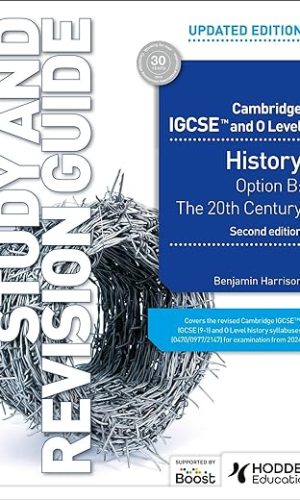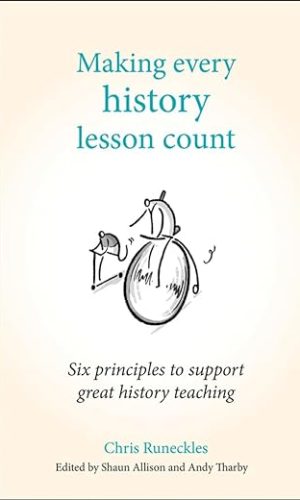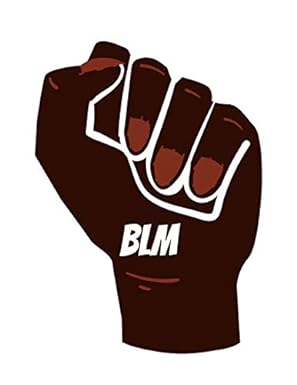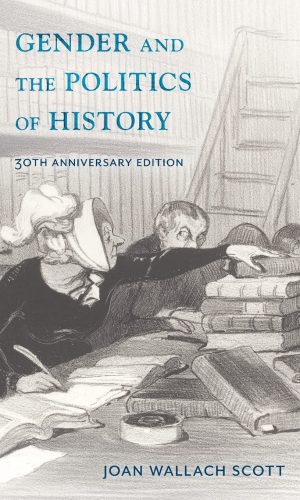-
Russia and Central Asia: Coexistence, Conquest, Convergence
Russia and Central Asia provides an overview of the relationship between two dynamic regions, highlighting the ways in which Russia and Central Asia have influenced and been influenced by Europe, Asia, and the Middle East. This readable synthesis, covering early coexistence in the seventeenth century to the present day, seeks to encourage new ways of thinking about how the modern world developed. Shoshana Keller focuses on the five major “Stans”: Kazakhstan, Kyrgyzstan, Tajikistan, Uzbekistan, and Turkmenistan. Cultural and social history are interwoven with the military narrative to provide a sense of the people, their religion, and their practices – all of which were severely tested under Stalin. The text includes a glossary as well as images and maps that help to highlight 500 years of changes, bringing Central Asia into the general narrative of Russian and world history and introducing a fresh perspective on colonialism and modernity.Read more
£19.00£23.70 -
China: A History
Three thousand years of Chinese history in an accessible and authoritative single volume.
Despite the recent rise of China to a position of dominance on the world economic stage, Chinese history remains an elusive subject. Yet it is this vast narrative of appalling loss, superhuman endeavour and incredible invention that has made China the superpower it is today. From the dawn of legend to the succession of great dynasties, from Confucius to Chairman Mao and from the clamour of revolution to the lure of slick capitalism, John Keay takes the reader on a sweeping tour through Chinese history. This is a definitive and indispensable account of a country set to play a major part in our future.
Read more
£12.60£14.20China: A History
£12.60£14.20 -
Asia: A Concise History
From one of the world’s leading historians?a comprehensive narrative of the 3,000 years that have formed Asia’s people, culture, and global destinyTracing its origins in Mesopotamia to its modern role on the global geopolitical stage, historian Arthur Cotterell offers a compelling, lively, and readable account of one of the most culturally diverse, and often misunderstood, parts of the world. Beginning with the emergence of the world’s earliest civilization in 3000 BC, Asia: A Concise History provides a fascinating look at the global convulsions?like the rise and fall of Assyria and Persia, the medieval states that flourished after the advent of Islam, and the modern transformations triggered by the lightning conquests of imperial Japan?that have shaped the continent.
- Covers the great events and figures of Asian history, along with a look at the monumental remains that bear witness to those times: the ziggurats of Iraq, the Taj Mahal, the Great Wall of China, the temple of Angkor Wat
- Includes fascinating slices of history, including funeral arrangements for Qin Shi Huangdi in 210 BC; an extract from Lord Macartney’s journal of his 1793 diplomatic mission to the Qing emperor Qian Long; and Toyotomi Hideyoshi’s edict of 1587 banning firearms in Japan
- Features boxed inserts of special interest?like a Babylonian recipe for lamb stew circa 1500 BC
- Contains over 100 illustrations, maps, and photos
- Other books by Cotterell: The Minoan World, The First Emperor of China, The Encyclopedia of Mythology, and Chariot
Destined to become a reference staple for history buffs and students of Asian history, Asia: A Concise History offers readers a breathtaking narrative and wealth of detail that make the formative periods, key events, and personalities from this once remote part of the world come alive.
Read more
£18.00Asia: A Concise History
£18.00 -
In Little Need of Divine Intervention: Takezaki Suenaga’s Scrolls of the Mongol Invasions of Japan: 113 (Cornell East Asia)
In Little Need of Divine Intervention presents a fundamental revision of the thirteenth-century Mongol Invasions of Japan by revealing that the warriors of medieval Japan were capable of fighting the Mongols to a standstill without the aid of any “divine winds” or kamikaze. Conlan’s interpretation of the invasions is supplemented with translations of the picture scrolls commissioned by Takezaki Suenaga, a warrior who fought against the Mongols. In addition, translations of nearly seventy administrative documents are provided, thereby enabling students of Japanese history reconstruct the invasions using contemporary sources. A rare copy of Takezaki Suenaga’s Scrolls, reproduced in full, reveals hitherto unknown missing scenes. Furthermore, the scrolls’ images can be now read in tandem with its narrative passages, translated in English for the first time. Please note that the entire book was intentionally printed from back to front, so that the reproduced scrolls unfold in Japanese order, from right to left. Thus the book’s spine is on the right. This monograph will prove to be of great interest for students and scholars of medieval Japanese history, warrior culture, and the nature of Japan in an East Asian context.
Read more
£23.70 -
A Short History of South-East Asia
Explore the fascinating history of south-east AsiaA Short History of South-East Asia, Sixth Edition is the latest in a series of updated texts spotlighting this fascinating region. With revised chapters for all of the countries in this geographic area, this interesting text paints a remarkable overview of the characters and events that have shaped this part of the world. Founded upon a deeply perceptive observation of the late founding Prime Minister of Singapore Lee Kuan Yew, this book brings shape to the idea that ‘to understand the present and to anticipate the future, one must know enough of the past, enough to have a sense of the history of a people.’ With an approachable writing style and comprehensive content, this unique text was written for business readers interested in improving their understanding of this important region.
With globalization continuing to gain momentum, south-east Asia is emerging as an important business sector for many industries. Not only does this open up professional opportunities, it exposes individuals in other parts of the world to the unique histories and cultures of the area. If you are interested in learning more about the region, this abbreviated text is a wonderful resource.
- Explore historic and political developments that have taken place throughout south-east Asia
- Quickly navigate text organized by country, allowing you to dive into the events that have shaped Brunei, Cambodia, East Timor, Indonesia, Lao PDR, Malaysia, Myanmar, the Philippines, Singapore, Thailand, and Vietnam
- Gain an important global perspective, which can prove valuable on personal and professional levels
- Leverage your new understanding of the region’s past to better understand its present and anticipate its future
A Short History of South-East Asia, Sixth Edition is an abbreviated history of south-east Asia written with business readers in mind.
Read more
£17.10 -
Setting the East Ablaze: Lenin’s Dream of an Empire in Asia
‘Let us turn our faces towards Asia’, exhorted Lenin when the long-awaited revolution in Europe failed to materialize. ‘The East will help us conquer the West.’ Peter Hopkirk’s book tells for the first time the story of the Bolshevik attempt to set the East ablaze with the heady new gospel of Marxism. Lenin’s dream was to liberate the whole of Asia, but his starting point was British India. A shadowy undeclared war followed. Among the players in this new Great Game were British spies, Communist revolutionaries, Muslim visionaries and Chinese warlords – as well as a White Russian baron who roasted his Bolshevik captives alive. Here is an extraordinary tale of intrigue and treachery, barbarism and civil war, whose violent repercussions continue to be felt in Central Asia today.Read more
£9.60£10.40 -
The Borneo Confrontation: Volume 1 – Indonesian-Malaysian Confrontation, 1963-1966: 44 (Asia@War)
The aftermath of the Second World War saw many colonial empires in a state of upheaval. In South East Asia, what had been armed resistance against the Japanese invaders and occupiers was now often turned into national liberation movements seeking independence from the European empires. The Second World War may have ended but this was anything other than an era of peace. This was an era in which Britain moved between successive crises in Palestine, Kenya, Cyprus, Suez and the wider Middle East, in addition to fighting a conventional war in Korea, maintaining a significant peacetime army in West Germany and Berlin, and honoring commitments to the South East Asia Treaty Organization.Volume 1 of Borneo Stand-off examines the background, context and origins of Britain’s military experience in post-Second World War South East Asia as Malaya transitioned from colony to the independent state of Malaysia, up to and including the Brunei Revolt of 1962, and sets the scene for the coming Confrontation – or Konfrontasi – with the Indonesia of Sukarno, buoyed by his recent successes against the Netherlands in the former Dutch East Indies.
Borneo Stand-off Volume 1: Seeds of the Confrontation and the Brunei Revolt of 1962 is illustrated throughout with photographs, and includes color artworks of the men, vehicles and aircraft of the era of Confrontation.
Read more
£16.20£19.00 -
How Secular Is Art?: On the Politics of Art, History and Religion in South Asia
As an invitation to interrogate the secular modality of art, the book unsettles both the categories of ‘art’ and ‘secular’ in their theoretical and historical implications. It questions the temporal, spatial and cultural binaries between the ‘sacred’ and the ‘secular’ that have shaped art historical scholarship as well as artistic practice. All the essays here are anchored in a conception of a region, whether we call it South Asia or the Indian subcontinent – one, fissured by histories of partition, state formations and religious nationalisms, but still offering a collective site from which to speak to the disciplines of art and the knowledge worlds in which they are embedded. The book asks: How do we complicate the religious designations of pre-modern art and architecture and the new forms of their resurgence in contemporary iconographies and monuments? How do we re-conceptualize the public and the political, as fiery contestations and new curatorial practices reconfigure the meaning of art in the proliferating spaces of museums, galleries, biennales and festivals? How do we understand South Asian art’s deep entanglements with the politics of the present?Read more
£28.50 -
Southeast Asia in the Age of Commerce 1450–1680 – The Lands Below the Winds V 1 (Paper): Volume One: The Lands Below the Winds (Revised)
In The Lands below the Winds-the first volume of a two-volume set chronicling the rise of Southeast Asian culture during the years from 1450 to 1680-Anthony Reid vividly explores everyday life in the different societies of the region, from diet, housing, commerce, and law to sexual and family relations, patterns of warfare, and popular entertainment. In so doing he enables us to perceive the underlying coherence and splendid variety in the complex mosaic of Southeast Asia. “Anyone interested in Southeast Asian history should read, teach, and learn from this enthralling, fastidious book.”-David P. Chandler, Journal of Asian Studies “There is nothing that catches better the general look of things on the eve of European hegemony or evokes more effectively what Southeast Asia was like when Southeast Asians themselves bestrode it.”-Clifford Geertz, New York Review of Books “An outstandingly readable example of its genre, a superb unrhetorical portrayal of its society and period. One can scarcely wait for the sequel.”-E.L. Jones, Asian Studies Association of Australia Review “A model of ‘total history.’ The level of synthesis, judgment, and insight are so high as to entirely reconstruct our understanding of pre-colonial Southeast Asia.”-James C. Scott, Yale University “It is the most important study in the field for many years; it is likely to set the agenda for research in the field for many years to come.”-Norman Owen, All Asia Review of BooksRead more
£47.90 -
The Lands of Central Asia: Millennia-old Central Asian civilisations, from the Neolithic to the Early Medieval Period
- A comprehensive guide for those seeking to understand the rich cultural heritage of Central Asia
- The most authoritative single-volume treatment of the long history of Central Asia
- With all new colour plates in a beautiful hardback edition, this book seeks to bring Central Asia’s illustrious history to life for a new international audience
A comprehensive guide for those seeking to understand the rich cultural heritage of Central Asia, this book is the most authoritative single-volume treatment of the region’s long history. This newly translated volume investigates the civilisations and states which emerged in Central Asia from the Bronze Age up to the 5th century AD. It examines their differing religions and cultures and explores their changing relationships over time. With all new colour plates in a beautiful hardback edition, this book seeks to bring Central Asia’s illustrious history to life for a new international audience.
Read more
£20.70£23.80 -
How Asia Found Herself: A Story of Intercultural Understanding
A pioneering history of cross-cultural knowledge that exposes enduring fractures in unity across the world’s largest continentThe nineteenth century saw European empires build vast transport networks to maximize their profits from trade, and it saw Christian missionaries spread printing across Asia to bring Bibles to the colonized. The unintended consequence was an Asian communications revolution: the maritime public sphere expanded from Istanbul to Yokohama. From all corners of the continent, curious individuals confronted the challenges of studying each other’s cultures by using the infrastructure of empire for their own exploratory ends. Whether in Japanese or Persian, Bengali or Arabic, they wrote travelogues, histories, and phrasebooks to chart the vastly different regions that European geographers labeled “Asia.”
Yet comprehension does not always keep pace with connection. Far from flowing smoothly, inter-Asian understanding faced obstacles of many kinds, especially on a landmass with so many scripts and languages. Here is the dramatic story of cross-cultural knowledge on the world’s largest continent, exposing the roots of enduring fractures in Asian unity.Read more
£23.00£23.80 -
A History Of South East Asia,
A History of Southeast Asia narrates the history of the region from earliest recorded times until today, covering present-day Myanmar, Thailand, Cambodia, Laos, Vietnam, Malaysia, Singapore, Brunei, the Philippines, Indonesia and East Timor. Concisely written and filled with historical anecdotes of key individuals and events, this authoritative volume is presented in three parts, covering both mainland and maritime Southeast Asia: *Part 1 – Early Southeast Asia (the earliest civilizations)*Part 2 – Late Southeast Asia (including the colonial period)*Part 3 – Modern Southeast Asia (the present-day era, following the Pacific dimension of the Second World) Superbly supported by over 200 illustrations, photographs and maps, this volume provides real insight into one of the world’s most distinctive but complicated regions, at a time when Asian countries are beginning to set the pace in the global economy.Read more
£16.20£19.00A History Of South East Asia,
£16.20£19.00 -
Modern South Asia: History, Culture, Political Economy
Jointly written by two leading Indian and Pakistani historians, Modern South Asia offers a rare depth of historical understanding of the politics, cultures and economies that shape the lives of more than a fifth of humanity. After sketching the pre-modern history of the sub-continent, the book concentrates on the last three centuries.
This new second edition has been updated throughout to take account of recent historical research. It includes an expanded section on post-independence with a completely new chapter on the period from 1991 to the present and a chapter on the last millennium in subcontinental history. There is a new chronology of key events.Read more
£26.30 -
Asia in Flanders Fields: Indians and Chinese on the Western Front, 1914 1920
The First World War brought peoples from five continents to support the British and French Allies on the Western Front. Many were from colonial territories in the British and French empires, and the largest contingents were Indians and Chinese – some 140,000. It is a story of the encounter with the European ‘other’, including the civilian European local populations, often marred by racism, discrimination and zenophobia both inside and outside the military command, but also lightened by moving and enduring ‘human’ social relationships. The vital contribution to the Alles and the huge sacrifices involved were scarcely recognised at the Paris Peace Conference in 1918 or the post-war victory celebrations and this led to resentment – see huge media coverage in 2021. The effect of the European ‘other’ experience enhanced Asian political awareness and self-confidence, and stimulated anti-imperialism and proto-nationalism. This is a vivid and original contribution to imperial decline from the First World War. and the originality of the work is enhanced by rare sources culled from original documents and ‘local’ European fieldwork – in French, German and Flemish.Read more
£23.70 -
US Seventh Fleet, Vietnam 1964–73: American naval power in Southeast Asia
A superbly illustrated examination of how the US Navy’s most powerful fleet fought the Vietnam War, covering all of its elements from aircraft carriers and heavy cruisers to minesweepers and oilers.The US Navy’s Seventh Fleet was at the forefront of America’s campaign in Vietnam for a decade, from the Gulf of Tonkin Incident that began it all to the final evacuation of South Vietnam. Its mission was highly strategic, and while its primary role was to provide carrier-based air power over North Vietnam – from Rolling Thunder through Linebacker – the fleet’s operations were complex, sensitive, and varied, and required all the capabilities of the fleet.
This book is the first overall examination of how US Navy’s most powerful fleet fought and operated in Vietnam. Distilled from thousands of declassified secret documents by renowned US Navy specialist Dr Edward J. Marolda, it offers a unique new portrait of how the Seventh Fleet fought the Vietnam War, from the offensive strike power of naval aviation to the vital role of fleet logistics. As well as the carrier operations, he examines the surface combatant fleet’s gunfire support role, and its raids against the North Vietnamese coast. Dr Marolda also looks at amphibious warfare, fleet air defense, search-and-rescue, and mining and interdiction operations.
Illustrated throughout with archive photos, 3D diagrams and spectacular new artwork, and informed by never-before-translated official documents, publications, and personal accounts from North Vietnamese, Soviet, and Chinese sources, this is the real story behind the US Navy’s Vietnam War.
Read more
£11.00£15.20 -
The History of Central Asia: The Age of Decline and Revival (Volume 4)
For more than a hundred years, Central Asia was the heartland of the mightiest military power on the planet. But after the fragmentation of the all-conquering Mongol polity, the region began a steep decline which rendered this former domain of horse lords peripheral to world affairs. The process of deterioration reached its nadir in the second half of the nineteenth century, when the former territories and sweeping steppes of the great khans were overrun by Tsarist Russia. In the concluding volume of his acclaimed Central Asia quartet, Christoph Baumer shows how China in the east, and Russia in the northwest, succeeded in throwing off the Mongol yoke to become the masters of their own previous rulers. He suggests that, as traditional transcontinental trade routes declined in importance, it was the `Great Game’ – or cold war between Imperial Russia and Great Britain – which finally brought Central Asia back into play as a region of strategic importance. This epic history concludes with an assessment of the transition to modern independence of the Central Asian states and their struggle to contain radical Islamism.Read more
£28.50 -
Ionian Vision: Greece in Asia Minor, 1919-22
Michael Llewellyn-Smith sets the Greek occupation of Smyrna and the war in Anatolia against the background of Greece’s ‘Great Idea’ and of great power rivalries in the Near East. He traces the origins of the Greek statesman Eleftherios Venizelos’s ‘Ionian Vision’ to his joint conception with David Lloyd George of an Anglo-Greek entente in the Eastern Mediterranean. This narrative text presents a comprehensive account of the disaster which has shaped the politics and society of modern Greece.Read more
£12.30 -
Unfabling the East: The Enlightenment’s Encounter with Asia
How Enlightenment Europe rediscovered its identity by measuring itself against the great civilizations of Asia
During the long eighteenth century, Europe’s travelers, scholars, and intellectuals looked to Asia in a spirit of puzzlement, irony, and openness. In this panoramic book, Jürgen Osterhammel tells the story of the European Enlightenment’s nuanced encounter with the great civilizations of the East, from the Ottoman Empire and India to China and Japan. He shows how major figures such as Leibniz, Voltaire, and Gibbon took a keen interest in Asian culture and challenges the notion that Europe’s formative engagement with the non-European world was invariably marred by an imperial gaze and presumptions of Western superiority. A momentous work by one of Europe’s most eminent historians, Unfabling the East brings the sights and sounds of this tumultuous age vividly to life. It takes readers on a thrilling voyage to the farthest shores, bringing back vital insights for our own multicultural age.
Read more
£19.80£20.90 -
The Dust on the Throne: The Search for Buddhism in Modern India (South Asia in Motion)
Received wisdom has it that Buddhism disappeared from India, the land of its birth, between the thirteenth and fourteenth centuries, long forgotten until British colonial scholars re-discovered it in the early 1800s. Its full-fledged revival, so the story goes, only occurred in 1956, when the Indian civil rights pioneer Dr. B.R. Ambedkar converted to Buddhism along with half a million of his Dalit (formerly “untouchable”) followers. This, however, is only part of the story. Dust on the Throne reframes discussions about the place of Buddhism in the subcontinent from the early nineteenth century onwards, uncovering the integral, yet unacknowledged, role that Indians played in the making of modern global Buddhism in the century prior to Ambedkar’s conversion, and the numerous ways that Buddhism gave powerful shape to modern Indian history.
Through an extensive examination of disparate materials held at archives and temples across South Asia, Douglas Ober explores Buddhist religious dynamics in an age of expanding colonial empires, intra-Asian connectivity, and the histories of Buddhism produced by nineteenth and twentieth century Indian thinkers. While Buddhism in contemporary India is often disparaged as being little more than tattered manuscripts and crumbling ruins, this book opens new avenues for understanding its substantial socio-political impact and intellectual legacy.
Read more
£24.00£26.60 -
A Short History of Laos: The land in between (Short History of Asia)
Laos, perhaps the least known country in mainland Southeast Asia, stands at the region’s crossroads. This small ‘land in between’ is surrounded by China, Vietnam, Cambodia, Thailand and Burma-countries that, in pre-modern times, provided Lao kings with a field for territorial expansion. But more often, Laos has been a bridge between these powerful neighbours, and an arena in which they and their allies have interfered.Here, Grant Evans brings Lao history vividly into focus. From ancient times when the dynastic states of the region waxed and waned, to the 20th century and the turmoil of independence from France and the Vietnam War and its aftermath, Evans traces the compelling story of the emergence of Laos as a modern nation.
A Short History of Laos is an ideal introduction to Laos for travellers, businesspeople and students. For those familiar with Lao history, Evans investigates key events in new ways and presents serious challenges to conventional views about Laos’ intriguing history. country’s past.
Read more
£7.20 -
The History of Sri Lanka: From Sigiriya to Serendipity
Discover the amazing story of Sri Lanka, an island nation renowned for its vibrant culture, rich heritage, and breathtaking natural beauty. In “The History of Sri Lanka,” embark on a captivating journey through the ages, exploring the ancient civilizations, colonial encounters, and the country’s path towards modernity.
Delve into the enchanting origins of Sri Lanka, unearthing the myths, legends, and ancient settlements that shaped its early history. Experience the majesty of Sigiriya, the rock fortress of King Kasyapa, and marvel at the architectural wonders of Anuradhapura, the glorious capital of the Sinhalese kingdom.
Uncover the transformative influence of Emperor Ashoka and the arrival of Buddhism, which left an indelible mark on Sri Lankan society and culture. Witness the rise and fall of powerful kingdoms, the encounters with European colonizers, and the struggle for independence that shaped the country’s destiny.
Explore the diverse facets of Sri Lanka’s cultural heritage, from the golden age of Sinhalese literature to the revitalization of traditional arts and crafts. Immerse yourself in the country’s culinary delights, a fusion of flavors that tantalize the taste buds and reflect the cultural diversity of the island.
Uncover the economic development and global integration that have propelled Sri Lanka into the modern era. From trade and tourism to infrastructure development and technological innovation, witness the country’s journey towards prosperity and its growing role on the global stage.
Whether you are a history enthusiast, a traveler seeking to deepen your understanding of Sri Lanka, this book is a must-read. It will transport you to a world of ancient wonders, colonial encounters, and modern aspirations, leaving you with a profound appreciation for the beauty and complexities of Sri Lanka.
Indulge in the pages of “The History of Sri Lanka” and embark on a journey that will captivate your imagination, broaden your horizons, and deepen your appreciation for this remarkable island nation.Read more
£5.30 -
Empires of the Normans: Makers of Europe, Conquerors of Asia
‘Powerful’ The Economist
‘Fascinating, panoramic . . . Roach brings an expert eye and page-turning energy’ Helen Castor, bestselling author of She Wolves
‘Narrated with pace, clarity, authority and style, Roach’s book is a bracing tour of the world that the Normans made their own’ Thomas Williams, bestselling author of Viking Britain
‘A fresh retelling . . . written with enthusiasm and brio’ Marc Morris, bestselling author of The Anglo-Saxons
How did descendants of Viking marauders come to dominate Europe, the Mediterranean and the Middle East?
It is a tale of ambitious adventures and fierce freebooters, of fortunes made and fortunes lost. The Normans made their influence felt across all of western Europe and the Mediterranean, from the British Isles to North Africa, and Lisbon to the Holy Land. In Empires of the Normans we discover how they combined military might and political savvy with deeply held religious beliefs and a profound sense of their own destiny. For a century and a half, they remade Europe in their own image, and yet their heritage was quickly forgotten – until now.
Read more
£4.70 -
OCR A Level History: The Cold War in Asia 1945–1993 and the Cold War in Europe 1941–95
Exam board: OCR
Level: A Level
Subject: History
First teaching: September 2015
First exams: AS: Summer 2016, A Level: Summer 2017An OCR endorsed resource
Successfully cover Unit Group 2 with the right amount of depth and pace. This bespoke series from the leading History publisher follows our proven and popular approach for OCR A Level, blending clear course coverage with focused activities and comprehensive assessment support.
– Develops understanding of the period through an accessible narrative that is tailored to the specification content and structured around key questions for each topic
– Builds the skills required for Unit Group 2, from explanation, assessment and analysis to the ability to make substantiated judgements
– Enables students to consolidate and extend their topic knowledge with a range of activities suitable for classwork or homework
– Helps students achieve their best by providing step-by-step assessment guidance and practice questions
– Facilitates revision with useful summaries at the start and end of each chapter
– Ensures that students understand key historical terms and concepts by defining them in the glossary
Read more
£24.70 -
A History of Central Asia (‘In Brief’ Books for Busy People)
For most of its history, Central Asia has been ruled by powerful dynasties, fallen under the vassalage of neighbouring empires or been invaded by foreign powers. Only the more remote, inaccessible tribal areas have maintained a degree of independence. However, since the fall of the Soviet Union in 1991, five distinct independent nation states have emerged that are now generally referred to as ‘Central Asia’, namely Uzbekistan, Tajikistan, Turkmenistan, Kazakhstan and Kyrgyzstan.
Regardless of who has been in power over the centuries, the one constant has been the significance of the land bridge that straddles the region connecting Europe and Asia, otherwise known as the Silk Road, or Roads. In ancient times, silks and spices travelled westwards, while furs, wools and precious metals took an eastward route. Consequently, those who controlled the trade-route accrued immense wealth and built great cities such as ancient Samarkand, Bukhara and Khiva.
The ancient Silk Road is now being revitalised. But rather than silks and spices, today the commodities being transported include natural gas, oil, minerals and communication systems.
This book tells the story of conquest and invasion, of empire building and colonialism. The earlier chapters include the great Persian/Iranian Empires, such as the Achaemenids, the Sassanids and the Safavids, as well as the exploits of Alexander the Great. Further chapters cover the Turkic migrations, arrival of Islam and the invasion of the Mongols. The final chapters tell of the conflict between the imperial powers of Russia and Britain, which was an event known as the Great Game. The 20th Century period of Soviet rule in Central Asia marks the final chapter and the book concludes with an Epilogue that brings the reader up to current events.
As with other books in the ‘In Brief’ series, this book is aimed at the general reader who wants to understand a particular historical topic but does not have the time or inclination to read a heavy academic tome. With this mind, footnotes have been omitted.While there will inevitably be gaps in a book of this size, the intention is to cover the most significant events that moulded Central Asia’s history. Should the reader be inspired to further reading on the subject, a small selection of the main works that have been consulted is provided at the end.
Read more
£5.10 -
A History of Southeast Asia: Critical Crossroads (Blackwell History of the World)
2016 PROSE Award Honorable Mention for Textbook in the HumanitiesA History of Southeast Asia: Critical Crossroads presents a comprehensive history of Southeast Asia from our earliest knowledge of its civilizations and religious patterns up to the present day.
- Incorporates environmental, social, economic, and gender issues to tell a multi-dimensional story of Southeast Asian history from earliest times to the present
- Argues that while the region remains a highly diverse mix of religions, ethnicities, and political systems, it demands more attention for how it manages such diversity while being receptive to new ideas and technologies
- Demonstrates how Southeast Asia can offer alternatives to state-centric models of history more broadly
Part of The Blackwell History of the World Series
The goal of this ambitious series is to provide an accessible source of knowledge about the entire human past, for every curious person in every part of the world. It will comprise some two dozen volumes, of which some provide synoptic views of the history of particular regions while others consider the world as a whole during a particular period of time. The volumes are narrative in form, giving balanced attention to social and cultural history (in the broadest sense) as well as to institutional development and political change. Each provides a systematic account of a very large subject, but they are also both imaginative and interpretative. The Series is intended to be accessible to the widest possible readership, and the accessibility of its volumes is matched by the style of presentation and production.
Read more
£26.60 -
Slavery in East Asia (Elements in the Global Middle Ages)
In premodern China, Korea, Japan, and Vietnam, just as in the far less culturally cohesive countries composing the West of the Middle Ages, enslavement was an assumed condition of servitude warranting little examination, as the power and profits it afforded to the slaver made it a convention pursued unreflectively. Slavery in medieval East Asia shared with the West the commonplace assumption that nearly all humans were potential chattel, that once they had become owned beings, they could then be either sold or inherited. Yet, despite being representative of perhaps the most universalizable human practice of that age, slavery in medieval East Asia was also endowed with its own distinctive traits and traditions. Our awareness of these features of distinction contributes immeasurably to a more nuanced understanding of slavery as the ubiquitous and openly practiced institution that it once was and the now illicit and surreptitious one that it intractably remains.Read more
£3.00£16.20 -
History of East Asia: A Captivating Guide to the History of China, Japan, Korea and Taiwan (Asian History)
If you want to discover the captivating history of East Asia, then keep reading…Four captivating manuscripts in one book:
- History of China: A Captivating Guide to Chinese History, Including Events Such as the First Emperor of China, the Mongol Conquests of Genghis Khan, the Opium Wars, and the Cultural Revolution
- History of Japan: A Captivating Guide to Japanese History, Including Events Such as the Genpei War, Mongol Invasions, Battle of Tsushima, and Atomic Bombings of Hiroshima and Nagasaki
- History of Korea: A Captivating Guide to Korean History, Including Events Such as the Mongol Invasions, the Split into North and South, and the Korean War
- History of Taiwan: A Captivating Guide to Taiwanese History and the Relationship with the People’s Republic of China
Here are just some of the topics covered in part 1 of this book:
- The Land of the Yellow Emperor
- Imperial China Emerges
- The Supremacy of the Han, 202 BCE–220 CE
- The Golden Age: The Tang Dynasty, 618–907
- The Song Dynasty, 960–1279
- Kublai Khan: The Yuan Dynasty, 1271–1368
- The Great Ming Dynasty, 1368–1644
- The Rise of the Qing, 1636–1912
- Revolutionary Madness
- The Republic of China to the People’s Republic of China
- And much, much more!
Here are just some of the topics covered in part 2 of this book:
- Children of the Sun
- Warring Clans
- The Two Imperial Courts
- Edo Japan: Part One-1603 to 1638
- Edo Period: Part Two-1638 to 1868
- The Meiji Restoration
- Foreign Relations
- The Taisho Era
- The Showa Era
- Japan in World War II and Its Aftermath
- Heisei Era
- And much, much more!
Here are just some of the topics covered in part 3 of this book:
- Land of the Bear
- The Dragon of the East Sea
- Dynasties Rise and Fall
- The Joseon Dynasty of Goryeo
- Foreign Invasions
- Merchants, Farmers, and Foreigners
- From Independence to Annexation
- Korea at War
- North Korea
- South Korea
- And much, much more!
Here are just some of the topics covered in part 4 of this book:
- Formosa: Beautiful Island
- The Arrival of the Chinese and Their Religion
- The Dutch Trading Years
- The Ming, The Qing, and Japan: The War Years
- Japanese Taiwan
- The Sino-Japanese War & World War II
- Taiwan After World War II
- And much, much more!
So if you want to learn more about the history of East Asia, scroll up and click the “add to cart” button!
Read more
£13.00 -
Superpower China – Understanding the Chinese world power from Asia: History, Politics, Education, Economy and Military (Global Superpowers)
Superpower China – Understanding the Chinese world power from Asia
History, Politics, Education, Economy and Military
Developments in China have become a constant concern to the media and society over the last few years.
But what is the truth among the many future scenarios of this superpower which operates in the shadows? How do they tick in the most highly populated country in the world? What are their aims and how does the indigenous population think? What types of developments are they making and where are their strengths and weaknesses?
Make up your own mind about this aspiring world power by understanding the figures and facts behind this expanding economy. In order to make yourself a comprehensive picture about the current export world champions, it is necessary to take into consideration their history, politics, education systems, economy and their military.
In this book you will get a glimpse of all of the aspects that make China what it is today. It is only when you look at everything together that you can begin to understand China, the country and its aims.
About the Author of this book, Hermann Rupold:
Ever since he completed his studies in political science, more than 25 years ago, he has been interested in the marginal subjects revolving around politics, society and history. As a teacher, he likes to share his knowledge with his students, but is also able to reach a much wider range of people through his various publications.
In his books he concentrates mainly on the effects such subjects have on various sections of society but which are largely unknown. All of his publications are based not only on general scientific research but also encompass his own very personal experiences and knowledge.
Read the fascinating background information and knowledge about the “middle realm” and you will discover a whole new side of the superpower of the east.
Get your copy of this book today and discover…
- … how the country became a global superpower,
- … how this enormous empire is structured and how it works,
- … what to expect from China in the next few years.
Content of this book:
- About the author
- Preface
- The History of China
- The Current Political System in China
- The Education System in China
- China’s Economy
- China’s Military Forces
- Conclusion
Read more
£3.80 -
Southeast Asia: An introductory history
The first edition of Southeast Asia: An introductory history was published in 1979 and immediately filled a need for travellers and students interested in a tantalisingly different part of the world. Subsequent editions (translated into Japanese, Khmer, Korean, Chinese and Thai) have continued to document with great perception the enormous changes and dramatic growth experienced in the region.
Dr Milton Osborne has been a resident, student and fascinated observer of Southeast Asia for many years. This familiarity has resulted in a highly readable and lively chronicle. While giving due regard to the early history of the region, Osborne concentrates on the changes that have taken place since the 18th century: the impact of colonial rule, the economic transformations of the 19th and 20th centuries, the emergence and triumph of the independence movements, the impact of social change and the pivotal roles played by religion, ethnic minorities and immigrant groups. He also provides an introduction to the art of the region and a comprehensive guide to literature about Southeast Asia.
Clearly written and extensively illustrated Southeast Asia: An introductory history remains a classic in the field.
‘Still one of the best short introductory histories of the region…’ Eric Tagliacozzo, Cornell University
Read more
£7.60£10.40Southeast Asia: An introductory history
£7.60£10.40 -
The Wars for Asia, 1911–1949
The Wars for Asia, 1911–1949 shows that the Western treatment of World War II, the Second Sino-Japanese War and the Chinese Civil War as separate events misrepresents their overlapping connections and causes. The Chinese Civil War precipitated a long regional war between China and Japan that went global in 1941 when the Chinese found themselves fighting a civil war within a regional war within an overarching global war. The global war that consumed Western attentions resulted from Japan’s peripheral strategy to cut foreign aid to China by attacking Pearl Harbour and Western interests throughout the Pacific in 1941. S. C. M. Paine emphasizes the fears and ambitions of Japan, China and Russia, and the pivotal decisions that set them on a collision course in the 1920s and 1930s. The resulting wars together yielded a viscerally anti-Japanese and unified Communist China, the still-angry rising power of the early twenty-first century.Read more
£19.80The Wars for Asia, 1911–1949
£19.80 -
Japan’s Gestapo: Murder, Mayhem and Torture in Wartime Asia
From the author of Children of the Camps, a look at the disturbing activities of the Kempeitai, Japan’s feared military and secret police.The book opens by explaining the origins, organization, and roles of the Kempeitai apparatus, which exercised virtually unlimited power throughout the Japanese Empire. Author Mark Felton reveals their criminal and collaborationist networks that extorted huge sums of money from hapless citizens and businesses. They ran the Allied POW gulag system that treated captives with merciless and murderous brutality. Other Kempeitai activities included biological and chemical experiments on live subjects, the Maruta vivisection campaign, and widespread slave labor, including “Comfort Women” drawn from all races. Their record of reprisals against military and civilians was unrelenting. For example, Colonel Doolittle’s raid on Tokyo in 1942 resulted in a campaign of revenge not just against captured airmen but thousands of Chinese civilians. Their actions amounted to genocide on a grand scale. Felton backs up his text with firsthand testimonies from survivors who suffered at the hands of this evil organization. He examines how the guilty were brought to justice and the resulting claims for compensation. As a result, Japan’s Gestapo provides comprehensive evidence of the ruthlessness of the Kempeitai against the white and Asian peoples under their control.
Read more
£0.90 -
Underground Asia: Global Revolutionaries and the Assault on Empire
SHORTLISTED FOR THE CUNDILL HISTORY PRIZE 2021
AN ECONOMIST AND HISTORY TODAY BOOK OF THE YEAR 2020
‘Compelling and highly original … The Asia that we see today is the product of the ‘underground’ which Harper describes with skill and empathy in this monumental work’ Rana Mitter, Literary Review
The story of the hidden struggle waged by secret networks around the world to destroy European imperialism
The end of Europe’s empires has so often been seen as a story of high politics and warfare. In Tim Harper’s remarkable new book the narrative is very different: it shows how empires were fundamentally undermined from below. Using the new technology of cheap printing presses, global travel and the widespread use of French and English, young radicals from across Asia were able to communicate in ways simply not available before. These clandestine networks stretched to the heart of the imperial metropolises: to London, to Paris, to the Americas, but also increasingly to Moscow.
They created a secret global network which was for decades engaged in bitter fighting with imperial police forces. They gathered in the great hubs of Asia – Calcutta, Singapore, Batavia, Hanoi, Tokyo, Shanghai, Canton and Hong Kong – and plotted with ceaseless ingenuity, both through persuasion and terrorism, the end of the colonial regimes. Many were caught and killed or imprisoned, but others would go on to rule their newly independent countries.
Drawing on an amazing array of new sources, Underground Asia turns upside-down our understanding of twentieth-century empire. The reader enters an extraordinary world of stowaways, false identities, secret codes, cheap firearms, assassinations and conspiracies, as young Asians made their own plans for their future.
‘Magnificent – it reads like a thriller and was difficult to put down’ Peter Frankopan, History Today
Read more
£15.00 -
The Russian Conquest of Central Asia: A Study in Imperial Expansion, 1814–1914
The Russian conquest of Central Asia was perhaps the nineteenth century’s most dramatic and successful example of European imperial expansion, adding 1.5 million square miles and at least 6 million people – most of them Muslims – to the Tsar’s domains. Alexander Morrison provides the first comprehensive military and diplomatic history of the conquest to be published for over a hundred years. From the earliest conflicts on the steppe frontier in the 1830s to the annexation of the Pamirs in the early 1900s, he gives a detailed account of the logistics and operational history of Russian wars against Khoqand, Bukhara and Khiva, the capture of Tashkent and Samarkand, and the bloody subjection of the Turkmen, as well as Russian diplomatic relations with China, Persia and the British Empire. Based on archival research in Russia, Kazakhstan, Uzbekistan, Georgia and India, memoirs and Islamic chronicles, this book explains how Russia conquered a colonial empire in Central Asia, with consequences that still resonate today.Read more
£34.20 -
Cambridge IGCSE and O Level History Study and Revision Guide, Second Edition
New edition to match the revised Cambridge IGCSE™, IGCSE (9-1) and O Level syllabuses (0470/0977/2147) for examination from 2024.
Reinforce knowledge and skills using a concise summary of the syllabus content and step-by-step support from an experienced author.
> Target revision on the issues, with Key Points for each section within a topic
> Build history vocabulary with a Key Terms glossary for each topic
> Check your understanding and progress with Test Yourself questions
> Reinforce knowledge and exam skills with exam-style practice questions and model answers
> Clarify key points and ensure common mistakes are avoided with advice and tipsThis book covers Core Content Option B: The 20th century: International Relations from 1919, and selected depth studies: Russia, 1905-41; Germany, 1918-45; and The United States, 1919-41.
This title is not part of the Cambridge International endorsement process.
Read more
£15.20 -
Making Every History Lesson Count: Six Principles to Support Great History Teaching (Making Every Lesson Count series)
Chris Runeckles’ ‘Making Every History Lesson Count: Six principles to support great history teaching’ offers lasting solutions to age-old problems and empowers history teachers with the confidence to bring their subject to life.
‘Making Every History Lesson Count’ goes in search of answers to the crucial question that all history teachers must ask: What can I do to help my students retain and interrogate the rich detail of the content that I deliver?
Writing in the practical, engaging style of the award-winning Making Every Lesson Count, Chris Runeckles articulates the fundamentals of great history teaching and shares simple, realistic strategies designed to deliver memorable lessons. The book is underpinned by six pedagogical principles challenge, explanation, modelling, practice, feedback and questioning and equips history teachers with the tools and techniques to help students better engage with the subject matter and develop more sophisticated historical analysis and arguments.
In an age of educational quick fixes and ever-moving goalposts, this carefully crafted addition to the Making Every Lesson Count series expertly bridges the gap between the realms of academic research and the humble classroom. It therefore marries evidence-based practice with collective experience and, in doing so, inspires a challenging approach to secondary school history teaching.
‘Making Every History Lesson Count’ has been written for new and experienced practitioners alike, offering gimmick-free advice that will energise them to more effectively carve out those unique moments of resonance with young people. Each chapter also concludes with a series of questions that will prompt reflective thought and enable educators to relate the content to their own classroom practice.
Suitable for history teachers of students aged 11-16 years.
Read more
£14.20 -
BLM: I Can’t Breathe
A photo journal that simply captures the spirit and energy of the Black Lives Matter movement. Hold a piece of history in your hands.Read more
£9.90BLM: I Can’t Breathe
£9.90 -
BLM: Notebook, Black-Lives-Matter, Movement, Unity, Solidarity, Strength, Raised Fist, 120 lined pages, Large sized 8.5″ x 11″, Civil Rights, Show Support, Journal for work or…
Symbolic of what is important today, right now. Show your support and pride for BLM. This is a peaceful way to show everyone around you where you stand. This notebook can be used at home, in your office, business, school or anywhere you want to write, create, take notes, make lists or reminders. Stand in the gap and be on the right side of history.Read more
£5.10 -
Gender and the Politics of History (Gender and Culture Series)
This landmark work from a renowned feminist historian is a foundational demonstration of the uses of gender as a conceptual tool for cultural and historical analysis. Joan Wallach Scott offers a trenchant critique of the compartmentalization of women’s history, arguing that political and social categories are always fundamentally shaped by gender and that questions of gender are essential to considerations of difference in history. Exploring topics ranging from language and class to the politics of work and family, Gender and the Politics of History is a vital contribution to feminist history and historical methodology that also speaks more broadly to the ongoing redefinition of gender in our political and cultural vocabularies.This anniversary edition of a classic text in feminist theory and history shows the evergreen relevance of Scott’s work to the humanities and social sciences. In a new preface, Scott reflects on the book’s legacy and implications for contemporary politics as well as what she has reconsidered as a result of her engagement with psychoanalytic theory. The book also includes a previously unpublished essay, “The Conundrum of Equality,” which takes up the question of affirmative action.
Read more
£22.40£23.80 -
Culture, Politics and Sport: Britain in the 20th Century: Bitesize Britain (Bitesize Britain: Britain in the 20th Century)
Explore the captivating journey of Britain through the 20th century with “Culture, Politics and Sport: Britain in the 20th Century”. This compelling book takes readers on a unique voyage through time, offering bite-sized chunks of social history that delve into the cultural, political, and sporting landscapes of each decade. From the dawn of the new century to the eve of the new millennium, this bite-sized guide provides an insightful and engaging account of Britain’s transformation over 100 years. Each decade is explored in a dedicated chapter, allowing readers to gain an understanding of the key events, societal shifts, and influential figures that shaped Britain. From the Roaring Twenties to the swinging 1960s and from the turbulent 1980s to the dawn of the digital age, the book offers a panoramic view of the nation’s social fabric.
The book seamlessly weaves together the intertwined threads of culture, politics and sport, revealing their impact on the British society throughout the 20th century. Discover how the arts, music, and literature evolved, reflecting the changing values and aspirations of the people. Uncover the political upheavals that shaped the nation, from the suffrage movement and the rise and fall of political ideologies to the transformative post-war welfare state. And dive into the world of British sport, where heroes were made, records were broken, and moments of triumph and heartbreak captured the nation’s spirit.
Through a combination of engaging storytelling and concise historical analysis, “Culture, Politics and Sport: Britain in the 20th Century” brings history to life. Whether you’re a history enthusiast or simply curious about the past, this book provides a fascinating exploration of the transformative events and social dynamics that have shaped modern Britain.
Read more
£14.20 -
Boom Cities: Architect Planners and the Politics of Radical Urban Renewal in 1960s Britain
Boom Cities is the first published history of the profound transformations of British city centres in the 1960s.It has often been said that urban planners did more damage to Britain’s cities than even the Luftwaffe had managed, and this study details the rise and fall of modernist urban planning, revealing its origins and the dissolution of the cross-party consensus, before the ideological smearing that has ever since characterized the high-rise towers, dizzying ring roads, and concrete precincts that were left behind.
The rebuilding of British city centres during the 1960s drastically affected the built form of urban Britain, including places ranging from traditional cathedral cities through to the decaying towns of the industrial revolution. Boom Cities uncovers both the planning philosophy, and the political, cultural, and legislative background that created the conditions for these processes to occur across the country.
Boom Cities reveals the role of architect-planners in these transformations. The volume also provides an unconventional account of the end of modernist approaches to the built environment, showing it from the perspective of planning and policy elites, rather than through the emergence of public opposition to planning.
Read more
£22.60

